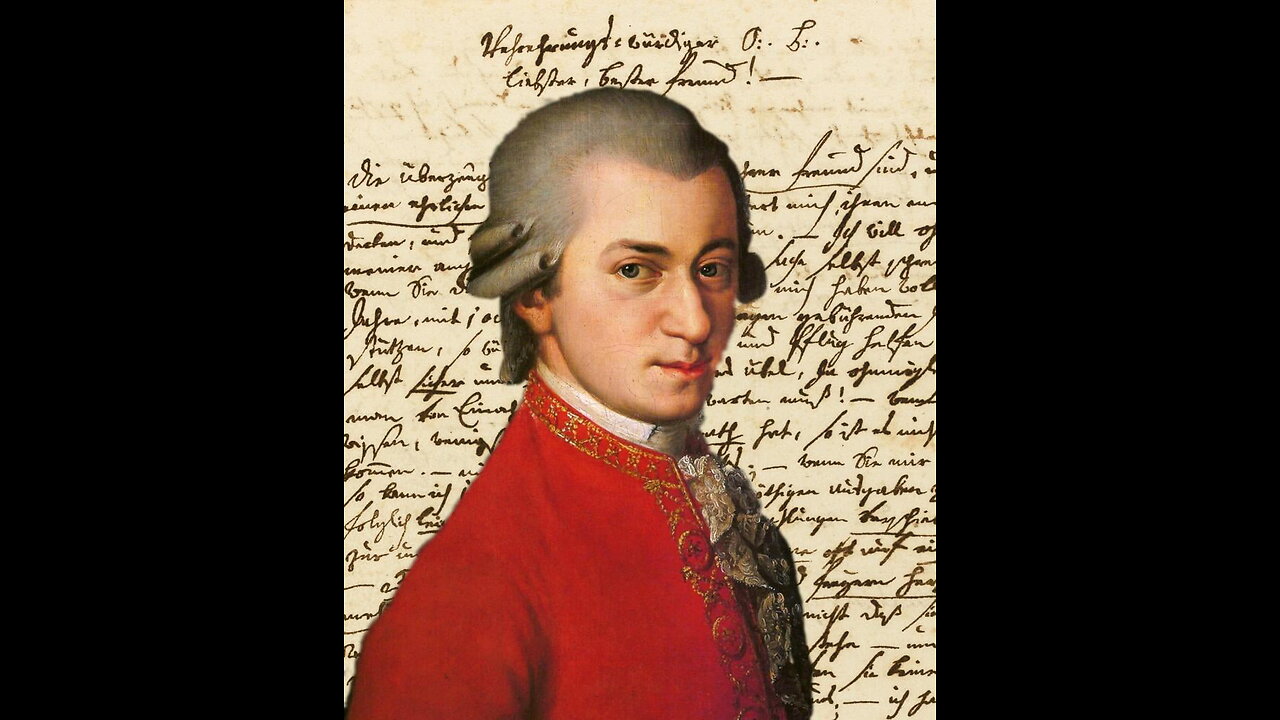Premium Only Content

Requiem in D Minor, K 626, Mozart
Requiem in D Minor, K 626, requiem mass by Wolfgang Amadeus Mozart, left incomplete at his death on December 5, 1791. Until the late 20th century the work was most often heard as it had been completed by Mozart’s student Franz Xaver Süssmayr. Later completions have since been offered, and the most favorably received among these is one by American musicologist Robert D. Levin.
According to a contract that Mozart signed and an attorney witnessed, the requiem was commissioned by Franz, Graf (count) von Walsegg-Stuppach. The count, it seems, pretended to some compositional ability and liked to pass off the work of others as his own. The new requiem, intended as a tribute to the count’s wife, was part of that game. Therefore, he insisted that Mozart was neither to make copies of the score nor to reveal his involvement in it and that the first performance was reserved for the man who commissioned the piece.
At the time, Mozart was deeply engaged with the writing of two operas: The Magic Flute and La clemenza di Tito (“The Clemency of Titus”). Together the three assignments were too much for a man suffering from a succession of debilitating fevers. Most of his failing strength went into the operas, both of which were completed and staged. As for the requiem, he worked on it when strength permitted, and several friends came to his apartment December 4, 1791, to sing through the score-in-progress. Yet his condition worsened, and, by the time of Mozart’s death early the next morning, he had finished only the “Introit.” The “Kyrie,” “Sequence,” and “Offertorium” were sketched out. The last three movements— “Benedictus,” “Agnus Dei,” and “Communio”—remained unwritten, and nearly all the orchestration was incomplete.
Confining musical discussion to those portions of the requiem that are mostly from Mozart’s own mind, the orchestra most often focuses on the strings, with woodwinds featured when greater poignancy is needed and brass and timpani largely relied on for forceful moments. Particularly in the vocal writing, Mozart’s intricate contrapuntal layers show the influence of the Baroque masters J.S. Bach and George Frideric Handel.
Especially in the “Sequence,” Mozart underlines the power of the text by setting prominent trombone passages against the voices: chorus in the “Dies Irae” and soprano, alto, tenor, and bass soloists in the “Tuba Mirum.” It is the most prominent use of the trombone in Mozart’s entire catalog.
Please subscribe to my Substack Channel:
https://juxtaposition1.substack.com/podcast
-
 29:02
29:02
Rehypothecation1
4 days agoMark Sanchez, USC, Rose Bowl, NFL felony crimes
6716 -
 LIVE
LIVE
Rallied
1 hour agoBATTLEFIELD 6 DOMINATION WITH RAL !BF6 #BF6 #Ad
106 watching -
 1:33:51
1:33:51
Steve-O's Wild Ride! Podcast
16 days ago $5.77 earnedJohn C. Reilly's Surprising Connection To Jackass (And Beef With Weeman!)
81.8K19 -
 LIVE
LIVE
Total Horse Channel
8 hours agoLow Roller Reining Classic | Main Arena | October 11th, 2025
234 watching -
 56:25
56:25
MentourPilot
1 year agoTITANIC of the Skies! - The Untold Story of Air France 447
21.1K5 -
 LIVE
LIVE
Lofi Girl
2 years agoSynthwave Radio 🌌 - beats to chill/game to
285 watching -
 2:07:47
2:07:47
LFA TV
15 hours agoTHE RUMBLE RUNDOWN LIVE @9AM EST
67.3K6 -
 2:20:46
2:20:46
I_Came_With_Fire_Podcast
10 hours agoThe Pattern Beneath the World: Nature, The Mark of the Beast, & the Sacred Order
18.5K14 -
![Mr & Mrs X - [DS] Antifa Are Planning An Insurrection,Trump Has Prepared The Counterinsurgency-EP 11](https://1a-1791.com/video/fwe2/6b/s8/1/k/3/R/p/k3Rpz.0kob-small-Mr-and-Mrs-X-DS-Antifa-Are-.jpg) 49:56
49:56
X22 Report
5 hours agoMr & Mrs X - [DS] Antifa Are Planning An Insurrection,Trump Has Prepared The Counterinsurgency-EP 11
52.1K50 -
 1:08:57
1:08:57
Wendy Bell Radio
9 hours agoPet Talk With The Pet Doc
50K27